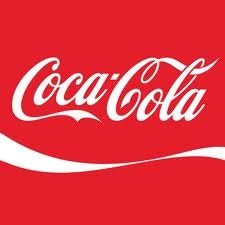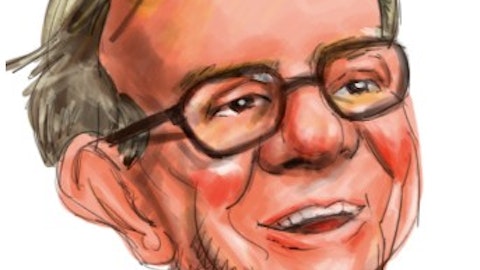
The Atlanta, GA based company’s earnings rose 13% in the quarter. Global sales gained a flat 3%, the lowest quarterly increase of 2012. But executives at the company shrugged off the slowdown. CFO Gary Fayard said on the earnings call, “It happened, but it’s not the start of a trend.”
But there is unquestionably a trend emerging in the soda industry. Sales of soft-drinks, like cola, are on the decline. Changing tastes and health concerns are chief factors for waning “pop” sales.
The iconic red Coca-Cola cans are not as welcome as they once were in a bevy of places. Schools are removing sugary soft drinks from vending machines at a quick clip, and local government offices are increasingly moving to remove them from public facilities as concerns about obesity and its costs to the nation mount.
U.S. consumption of soda has progressively dipped over the last eight years. Coke, along with the other beverage heavyweights PepsiCo, Inc. (NYSE:PEP) and Dr. Pepper Snapple Group Inc. (DPS), have offset the decline even amid rising commodities by boosting prices, which soda aficionados gladly pay for.
But the steady and accelerating decline (down 0.6% in 2012) has the trio relying more on their bottled water and non-fizzy drinks. Something Coke has plenty of.
In fact, the cola king has more than 500 brands in its cache of products, so it is well diversified. About 60% of Coke’s revenue in the U.S. comes from carbonated beverages. But as palates change, Coke is poised to pounce on any shift.
No. 2 player Pepsi derives about a quarter from the fizzy stuff, while No. 3 Dr. Pepper Snapple is the most reliant on soda at 90%. But unlike its peers, Dr. Pepper sells very little cola, which has been the biggest drag on Coke and Pepsi.
Despite the declines, soda accounts for nearly 25% of the $20.78 billion plus U.S. beverage market. Furthermore, soda devotees are a loyal bunch—some may even say they are addicted to the stuff. That kind of devoted following is exactly what has activists like NYC Mayor Michael Bloomberg moving to have super-sized, calorie laden Big Gulps and the like banned.
Americans are moving swiftly on their own accord to zero calorie beverages. Bloomberg BusinessWeek recently reported that 45% of all non-alcoholic beverages currently purchased in the U.S. are calorie-free as consumers are paying more attention to waistlines and wallets (water is still free in lots of restaurants).
Coca-Cola is paying strict attention to all changes in the industry and has taken note of this health conscious trend by serving up smaller sizes, using clear calorie labels and offering more “smart “choices.
Coke is the No.1 soda brand in the U.S., a position enjoyed for decades, according to Beverage Digest. It is also one of the most recognized brands in the world. Coke’s prowess is truly out-of-this-world. It holds bragging rights as the first soft drink in outer space. The crew of the Space Shuttle Challenger toasted with Coca-Cola Space Cans while in orbit.
The No. 2 brand is Diet Coke. Pepsi holds the No. 3 spot; its Mountain Dew brand rests at No. 4. Rounding out the top five is Dr. Pepper.
Coke CEO Muhtar Kent rounded out the earnings call in an upbeat tone. His future guidance was peppered with sweet details, “As we complete the 10th quarter of our 2020 Vision, we remain passionately focused on offering a portfolio of brands that refresh and hydrate our consumers while bringing them simple moments of happiness. Together with our system bottling partners, our long-term growth plans remain on track and our commitment to enhance the well-being of the consumers, customers and communities we serve around the world is as strong as ever.”
Whether or not you prefer Coke over Pepsi, there’s lots of reasons to be juiced over Coke. The company’s 2-for-1 split in July of 2012 was the 11th in the company’s 92-year history. It carries a commendable 2.74% dividend yield, and Coke is a longtime favorite of investment guru Warren Buffett.
Buffett’s Berkshire Hathaway (according to the conglomerates’ latest SEC filing) owns a whopping 400,000,000 KO shares, valued at $14,854,000,000, giving Berkshire an 8.92% stake in Coca-Cola. The Oracle of Omaha admits to downing five cans of Cherry Coke daily. The savvy investor uses a straight forward approach to investing and speaks in words everyone understands. His top rules of investing are: “Rule No. 1: Never lose money; rule No. 2: never forget Rule No. 1.”
Coke continues to rule the beverage battles and remains a Buffett core holding. For investor’s, Coke is the real thing.
The article Coke Hasn’t Lost Its Fizz originally appeared on Fool.com and is written by Diane Alter.
Copyright © 1995 – 2013 The Motley Fool, LLC. All rights reserved. The Motley Fool has a disclosure policy.




